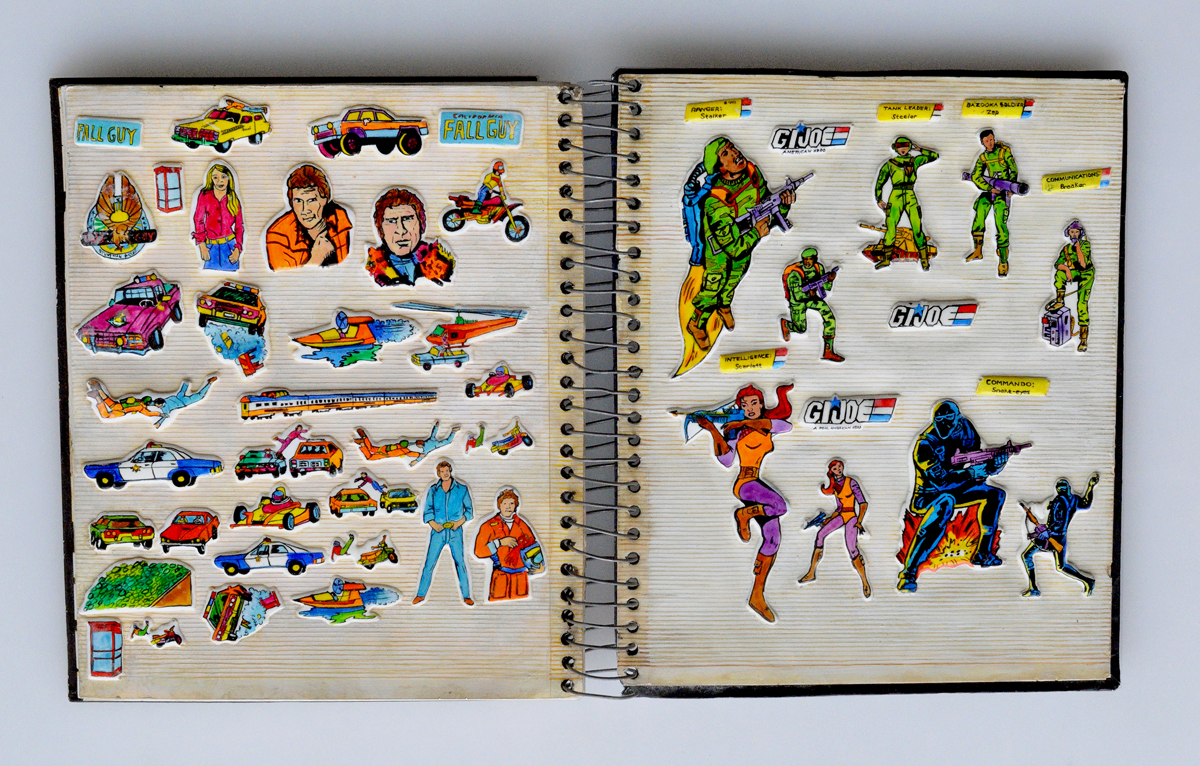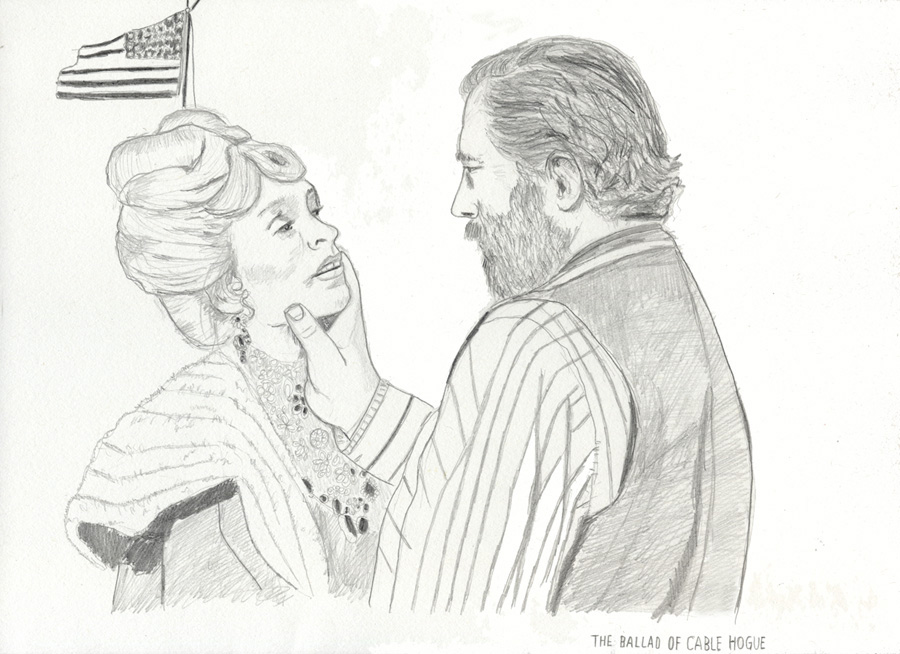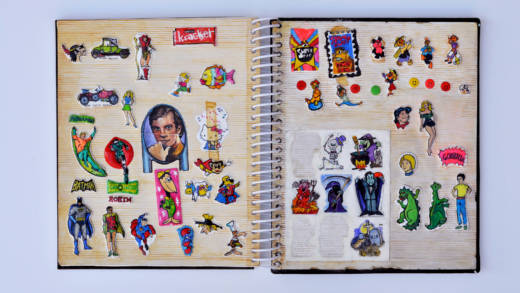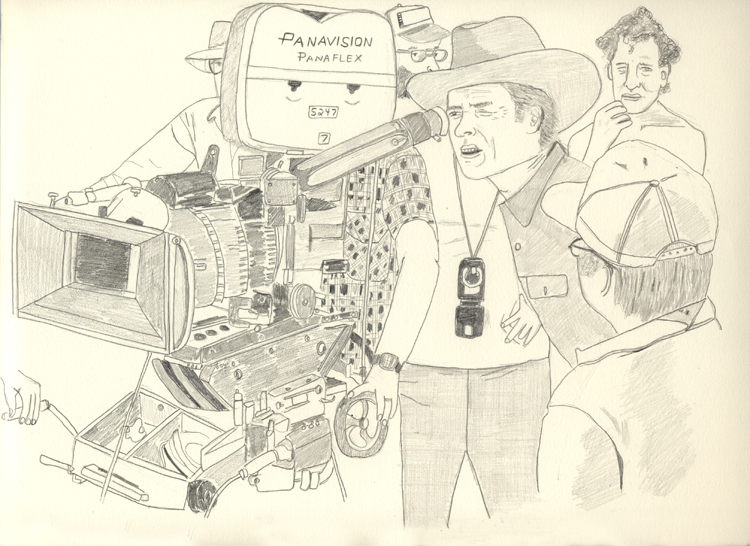On a quiet Mission District corner, in the space that once housed Eleanor Harwood Gallery (before she decamped, along with so many others, to 1275 Minnesota Street), state gallery is four exhibitions into its first year of operation. And should you find your art-viewing days increasingly spent in the southeast corner of San Francisco, Strange Reprise, a two-person show of drawings by Maria Forde and sculptures by Chris Thorson, makes a persuasive argument for adding 25th and Alabama back into your gallery-hopping circuit.
Strange Reprise is a show that stays with you. It’s full of all the fun “re-” words: it repeats, recreates and represents. Discretely grouped in separate sections of the gallery, both Forde and Thorson’s work revisits popular culture of the past, meticulously rendering the (often-unpleasant) residue of American iconography.
Thorson’s source material is a group of found sticker albums from the 1980s. Cast from urethane, painted with acrylic and reconnected with multi-hued binding coils, Thorson’s trompe l’oeil albums lay open on waist-high shelves around the gallery’s front room, each displaying only the intricately detailed spread of her choice.

With a practice long invested in replicating everyday objects, Thorson is very good at what she does. Her sticker books are easily mistaken for the “real thing” upon first glance. The puffy stickers have puff. The shiny stickers have shine. But up close, the yellowed stripe of tape holding an E.T. sticker to the page reveals itself as a hand-painted effect. It’s a thrilling moment that repeats itself again and again, and doesn’t diminish, even with nine albums on display.
Because while Thorson decides which pages to cast and reproduce, another, equally mesmerizing hand is at work: that of the original anonymous sticker collector. The wacky distribution of Pac-Man, Ziggy and a poison hotline stickers in Tabula Rasa (Nobody Understands) is familiar to anyone who was once a child. As is the impulse to empty an entire themed sticker sheet onto one page in an album. You know, for posterity. (See Tabula Rasa (America Hero) for all G.I. Joe, all the time.)

In state’s smaller back room, Maria Forde’s Western Drawings offer up a similarly obsessive catalog of scenes from Westerns, both behind and in front of the camera, as well as children reenacting Western-like scenes.




